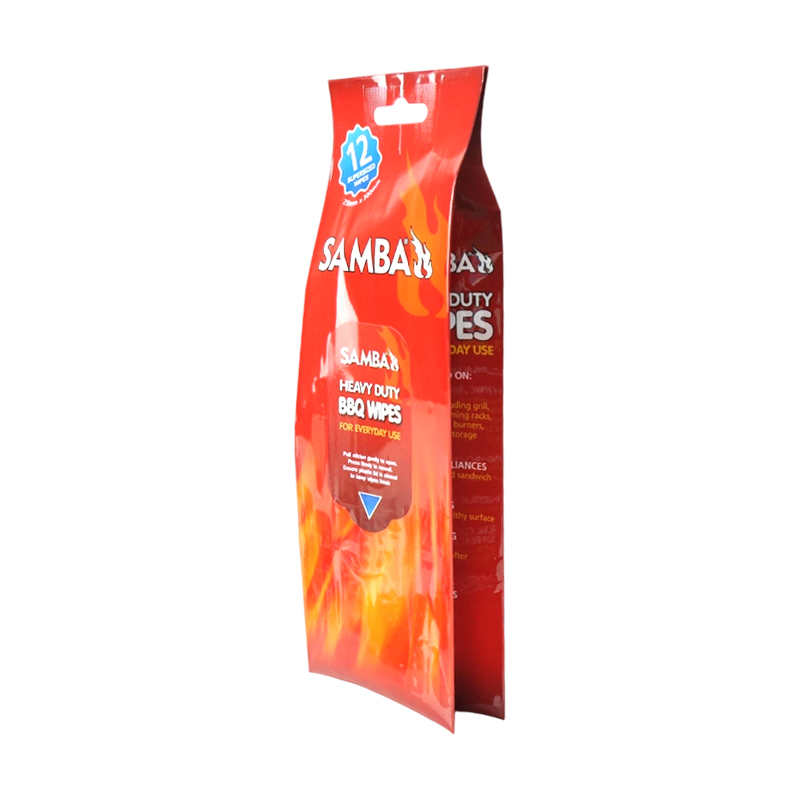2025-07-24
As the global demand for hygienic and personal care products continues to surge, packaging innovation is playing a vital role in maintaining product quality, safety, and convenience. One of the breakthroughs in this space is the emergence of Labeled Wet Wipe Packaging Bags—a solution gaining rapid traction among manufacturers and brand owners seeking to improve product presentation and consumer experience.
Meeting the Market’s Changing Expectations
Today’s consumers expect more from their packaging. It’s not enough for a product to simply look good; it must also perform. For wet wipes, packaging is critical—not only in preserving the moisture and cleanliness of the product but also in ensuring usability, portability, and brand communication.
This is where Labeled Wet Wipe Packaging Bags step in. Unlike traditional wet wipe packaging, which often relies solely on printed designs or simple resealable mechanisms, these bags incorporate advanced labeling features that combine form with function. The addition of a functional label—typically a rigid or semi-rigid piece placed over the opening—helps maintain the integrity of the seal after multiple uses, reducing the risk of product drying or contamination.
Function Meets Durability
At the heart of these packaging innovations is a focus on material quality and structure. labeled wet wipe bags are constructed from multi-layer flexible packaging films, which combine polyethylene (PE), polypropylene (PP), and polyester (PET) materials. These layers provide essential barrier properties—protecting the contents from moisture loss, oxygen exposure, and external contaminants.
What sets labeled packaging apart is the reinforced sealing area, which is designed to withstand repeated opening and closing. This is particularly crucial in multi-use packs, such as baby wipes or household disinfecting wipes, where product freshness over time is non-negotiable.
Additionally, the label itself is made from high-quality, semi-rigid plastic or laminated film. Its adhesive is specially engineered for durability, resisting peel or weakening even in humid or high-use conditions.

Labeling for Branding and Compliance
Beyond its practical utility, the label on a wet wipe bag also serves an important branding and regulatory role. It provides space for product information, usage instructions, ingredients, certifications, and branding elements, all within a high-visibility area on the packaging.
This is especially relevant in markets where hygiene and safety compliance is critical. For instance, in the personal care and healthcare sectors, accurate labeling on wet wipe packaging is necessary to meet regional regulations related to allergen disclosure, disinfectant claims, and expiration dates.
The labeled design creates a clear, structured area for this communication, reducing clutter and improving readability—benefits appreciated by both consumers and regulatory bodies.
Driving Efficiency for Manufacturers
For manufacturers, labeled wet wipe packaging bags offer more than just consumer-facing benefits—they also streamline production and supply chain logistics. labeled bags are compatible with high-speed form-fill-seal (FFS) machines and automatic labeling systems, making integration into existing lines relatively seamless.
Furthermore, the structural integrity of these bags reduces the likelihood of product loss during transit or on store shelves. With lower defect rates, enhanced shelf appeal, and longer freshness retention, the labeled packaging format helps optimize product performance throughout the entire lifecycle.
Sustainability Considerations
Sustainability continues to be a key focus in packaging innovation. While wet wipe packaging poses unique challenges due to moisture content and hygiene requirements, manufacturers are exploring recyclable films, biodegradable adhesive labels, and mono-material constructions that can support greener goals.
Some companies have begun offering removable label options that separate easily from the base material, allowing for improved recycling rates. Others are incorporating post-consumer recycled (PCR) materials into the film layers, further reducing environmental impact without compromising functionality.
Growth Potential and Market Outlook
The labeled wet wipe packaging segment is expected to see continued growth in the coming years, particularly across Asia-Pacific, North America, and Europe. According to recent industry reports, the global wet wipes market is projected to exceed USD 30 billion by 2028, and packaging will play a critical role in product differentiation and market share.
As hygiene awareness increases and brands seek to elevate user experience, the Labeled Wet Wipe Packaging Bag is poised to become a standard across multiple product categories, including baby care, cosmetics, home cleaning, and industrial use.